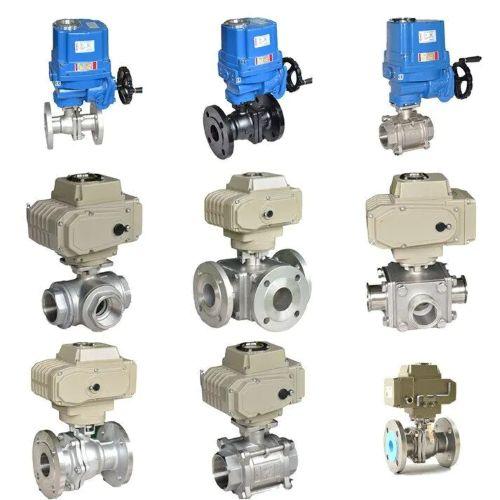Notifications

7 minutes, 31 seconds
-8 Views 0 Comments 0 Likes 0 Reviews

Comprehensive Guide to Control Valve Precautions and Preventive Maintenance
We are a leading control valve manufacturer in China, providing high-quality valves and control actuators designed to meet the diverse needs of various industries.
Control valves are critical components in industrial systems, ensuring precise regulation of fluid flow, pressure, and temperature. Proper handling, installation, and maintenance are essential for optimizing performance, preventing failures, and extending their lifespan. This guide outlines key precautions for using control valves and highlights preventive maintenance strategies to enhance operational efficiency and reliability.
The installation process significantly impacts the performance and durability of control valves. Adhering to best practices helps prevent inefficiencies, damage, and safety hazards.
Before installation, thoroughly clean the pipeline to remove contaminants such as dirt, rust, grease, or slag. Residual debris can damage the spool or seat, leading to improper sealing and reduced efficiency. After installing the valve, open it to its maximum position and flush the pipeline to eliminate residual particles. Additionally, test the sealing of valve joints to prevent leaks or slippage during operation.
Install control valves close to the ground or floor to facilitate easy maintenance and repairs. For valves with positioners or handwheel mechanisms, ensure their placement allows convenient observation, adjustments, and manual operation. This is particularly important for systems requiring frequent monitoring or intervention.
Verify that the flow direction aligns with the arrow marked on the valve body. Incorrect alignment can cause functional disruptions, internal wear, or component failure.
External forces such as thermal expansion, weight, and vibration can cause flange deformation, internal damage, or leaks. To mitigate these risks:
Use support frames to stabilize valves, particularly in long pipelines or high-vibration areas.
Avoid installing large-diameter control valves at an angle to prevent mechanical wear and packing leakage.
Implement vibration isolation measures in environments with heavy machinery or high turbulence.
For critical applications, consider installing a bypass pipeline around the control valve. This ensures system continuity during valve maintenance or failures. In industries where downtime is costly or unsafe, a bypass pipeline is a vital safeguard.
Control valves equipped with handwheel mechanisms provide manual operation options and act as limiting mechanisms for valve openings. During automatic control, ensure the handwheel is in the neutral position to prevent interference with the automated system.
Valves exposed to high temperatures require extra care to prevent packing material degradation. Lubricate the packing section every three months to maintain elasticity and sealing properties. Neglecting this step can lead to packing failure and leakage.
Preventive maintenance is crucial for maintaining reliability and performance. Regular inspections and tests help detect potential issues early, minimizing costly failures and downtime.
This test verifies the valve’s sealing integrity:
Close the valve under full-flow conditions.
Inspect for fluid leakage at valve gateways.
Ideally, there should be no leakage. If leakage is detected, check for wear or dimensional changes in valve components and replace or repair them as needed.
The stroke test evaluates valve operability under different conditions:
Activate the valve at full-flow conditions.
Observe its response to solenoid strokes.
Ensure smooth operation and accurate responsiveness to control signals. Regular stroke testing is essential for systems exposed to harsh conditions or frequent operational cycles.
Auxiliary piping systems affect valve performance. Regular inspections help prevent failures caused by external system issues. Key areas to check include:
Pipe Walls: Look for scaling, rust, or cracks.
Pipe Bends: Inspect for pressure-related damage or deformation.
Structural Integrity: Identify bending, bowing, or suction traces.
Fittings and Connections: Ensure they are secure and leak-free.
A compromised auxiliary piping system can diminish control valve efficiency and lead to costly repairs.
Even with proper installation and maintenance, control valves may experience operational issues. Here are common problems and their solutions:
Cause: Debris buildup, corrosion, or insufficient lubrication.
Solution: Clean internal components, apply suitable lubrication, and replace worn-out parts.
Cause: High flow velocity, improper installation, or inadequate support.
Solution: Install support frames, implement vibration isolation measures, and verify proper valve placement.
Cause: Deteriorated packing material or improper maintenance.
Solution: Replace packing material and maintain regular lubrication, especially for high-temperature applications.
Cause: Faulty positioner or calibration issues.
Solution: Inspect and recalibrate the positioner to restore accuracy.
A structured preventive maintenance program offers numerous advantages:
Enhanced Safety: Reduces risks of leaks, malfunctions, and potential hazards.
Cost Savings: Prevents expensive emergency repairs and downtime.
Increased Efficiency: Ensures precise flow, pressure, and temperature control.
Extended Lifespan: Minimizes wear and tear, enhancing valve longevity.
Regulatory Compliance: Meets industry standards and safety regulations, ensuring operational reliability.
Control valves are vital to industrial systems, and proper installation, operation, and maintenance are crucial for ensuring optimal performance and safety. By following the outlined precautions and implementing a robust preventive maintenance strategy, you can significantly improve the efficiency, reliability, and lifespan of control valves.
A proactive approach to valve maintenance minimizes operational disruptions and contributes to overall industrial success. Regular inspections, timely repairs, and adherence to best practices keep control valves in peak condition, delivering consistent performance in demanding environments.Know more about Google SEO Directory

